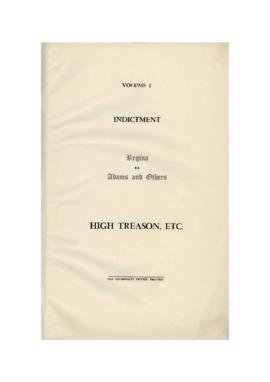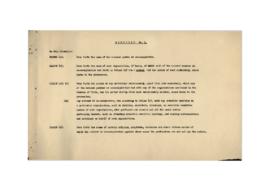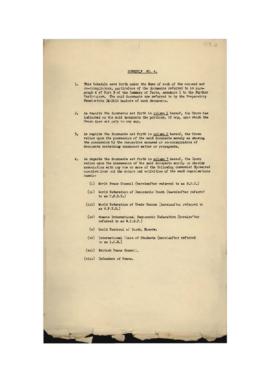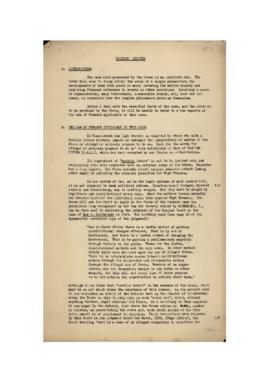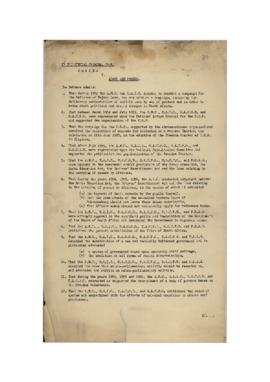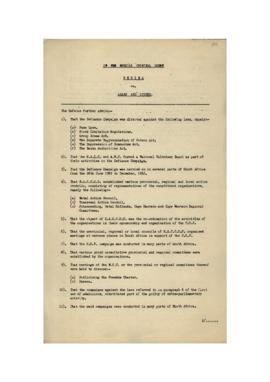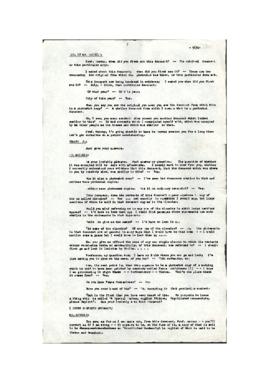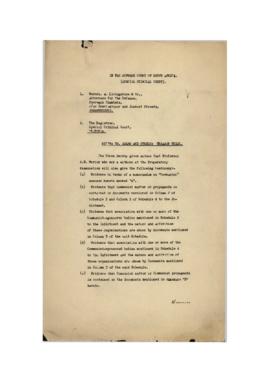Zona de identificação
Código de referência
Título
Data(s)
- 1956 - 1961 (Produção)
Nível de descrição
Fundos
Dimensão e suporte
75 boxes
Zona do contexto
Nome do produtor
História administrativa
After the formation of the Union of South Africa in 1910, legislation was enacted which discriminated against the non-White section of the population and increased the racial segregation existing at the time of Union. This angered many Blacks and caused a series of strikes by Black workers. By the 1920s responsible Europeans, particularly churchmen, saw the importance of bringing the races together. Native Welfare Societies, consisting of liberal and philanthropic Europeans, were founded which in due course were replaced by Joint Councils, inter-racial in character.
The Joint Council movement was largely the inspiration of Dr. Thomas Jesse Jones and Dr. J.E.K. Aggrey who in 1921 conducted a study tour of education in South Africa on behalf of the Phelps-Stokes Fund of the United States of America. They had seen the value of inter-racial councils in America and persuaded Dr. C.T. Loram, Chief Inspector of Education in Natal, and his friend J. D. Rheinallt Jones, Secretary of the Witwatersrand Council of Education, to establish a multi-racial organisation with the aim of promoting understanding and goodwill between the races. Rheinallt Jones founded the first Joint Council of Europeans and Africans in Johannesburg in 1921 and by 1931 there were in existence thirty European-African Joint Councils' three European-Indian Joint Councils and a European-Coloured Joint Council was in the process of formation. In all eighty Joint Councils were established, many of them continuing to exist side by side with the Institute of Race Relations after it was founded in 1929. By 1951 only two Joint Councils remained, of which only one was active.
During visits to South Africa in the 1920s Dr. Jesse Jones convinced Rheinallt Jones of the need to set up a national body to centralise interracial activities. The project was made possible by finance from the Phelps-Stokes Fund and the Carnegie Corporation. Rheinallt Jones convened an inter-racial conference in Cape Town in January 1929 which revealed enthusiasm for a national organisation. He called together a committee of seven prominent South Africans not connected with any political party - E.H. Brookes, Professor J. du Plessis, Professor D.D.T. Jabavu, Dr. C.T. Loram, T.W. Mackenzie, J.H. Nicholson and J.H. Pim. They met on 9 May 1929 at the house of the Rev. Dr. R.E. Phillips in Johannesburg, resolved to fern a South African Institute of Race Relations and elected C.T. Loram chairman Howard Pim treasurer and Rheinallt Jones secretary.
With the deaths of Mackenzie end Nicholson and the transfer of Loram to a professorial chair at Yale, the Committee was reduced to six but in 1930 Dr. J.G. van der Horst was added and in 1931 Professor R.F.A. Hoernle, Leo Marquard and Senator Lewis Byron. These ten committee members are regarded as the foundation members of the Institute.
Entidade detentora
História do arquivo
Fonte imediata de aquisição ou transferência
The records were transferred as part of the archive of the South African Institute of Race Relations (SAIRR).
Zona do conteúdo e estrutura
Âmbito e conteúdo
Records relating to the Treason Trial, Regina vs. F. Adams and 152 others on a charge of High Treason, 1956-1961.
Including: Correspondence, minutes, memoranda, printed items and court records including preparatory examination, indictment, arraignment and evidence, admissions, addresses, closing arguments, judgments and documentary exhibits. The exhibits relate to organisations including African National Congress, Communist Party of South Africa, Congress of Democrats, Congress of the People, Federation of South African Women, Natal Indian Congress, South African Coloured People's Association, South African Indian Congress, South African Peace Council, Springbok Legion, Transvaal Indian Congress, and to cultural-political groups, vigilance associations and trade unions. Also included are press summaries and bulletins of the Treason Trial Defence Fund. Amonst the many accused were Chief Albert J. Luthuli, Z.K. Matthews, Nelson Mandela and Walter Sisulu.
Avaliação, selecção e eliminação
Ingressos adicionais
Sistema de arranjo
Zona de condições de acesso e utilização
Condições de acesso
Condiçoes de reprodução
Idioma do material
Script do material
Notas ao idioma e script
Características físicas e requisitos técnicos
Instrumentos de descrição
Instrumento de pesquisa transferido
Zona de documentação associada
Existência e localização de originais
Existência e localização de cópias
A set of microfilms of this collection is available at Cooperative African Microfilm Project (CAMP), Chicago and a detailed analysis of the trial is given in T.Karis The Treason Trial in South Africa (Hoover Institution, Stanford University, 1965)
Unidades de descrição relacionadas
Zona das notas
Identificador(es) alternativo(s)
Pontos de acesso
Pontos de acesso - Assuntos
Pontos de acesso - Locais
Pontos de acesso - Nomes
Pontos de acesso de género
Zona do controlo da descrição
Identificador da descrição
Identificador da instituição
Regras ou convenções utilizadas
Estatuto
Nível de detalhe
Datas de criação, revisão, eliminação
Línguas e escritas
Script(s)
Fontes
Nota do arquivista
Archivist's Notes:
This collection is not a complete set of the trial records. It does not include the complete court records but does include a full set of the preparatory examination and documentary exhibits. For a detailed analysis of the trial see the collection of KARIS, T. The Treason Trial in South Africa: A guide to the microfilm record of the trial, Hoover Institute, Stanford University, 1965.
Digitisation of records:
The digitisation of the first part of the 1956 Treason Trial collection (except E & I) was made possible by a generous grant from The Atlantic Philanthropies. (July 2009)
The digitisation of the 1956 Treason Trial Evidence (E) and The Treason Trial Defence Fund (I) papers was made possible by a generous grant from Carnegie Corporation.
Sections F (Sydney Kentridge Papers) were added later and have not yet been digitised.
Nota do arquivista
The digital files were uploaded in an automated process. They do not always match the item under which they were uploaded. This remains Work-in-Progress.


